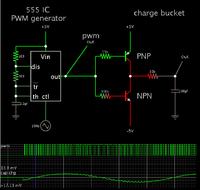ruby1212
Junior Member level 3

I need your advice concerning the possibility of designing a circuit which generates voltage steps of the order of 100uV....A staircase of 100uV voltage steps...I have been trying an integrator based circuit but i am encountering a lot of problems and i am not sure anymore it may lead to obtaining the 100uV steps....Anyone have tried to do this before ? Can anyone recommend any other direction to look into ??!!
Thanks!!
Thanks!!



